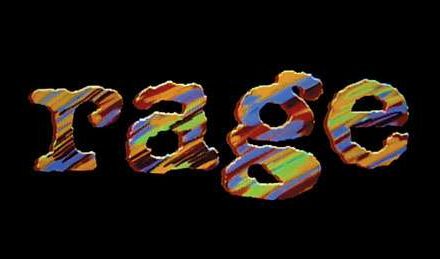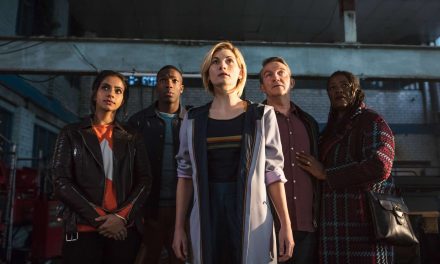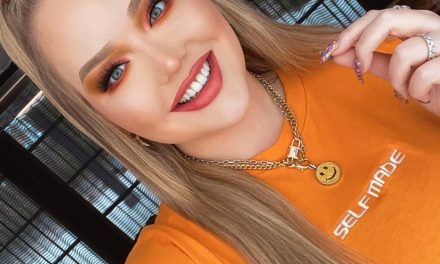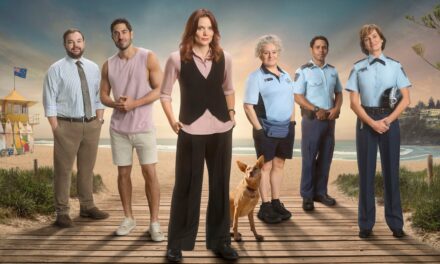As the ‘History of Television for Women in Britain’ team heave a collective sigh of relief at the completion of our main ‘impact’ activities for this project, I thought I would take advantage of the opportunity of blogging for CST to talk about our most recent impact adventure, and to reflect, on behalf of the team, on what we hope this aspect of the project might have achieved. Following our recent venture with ‘The Pop-Up TV Pop Shop’ in Coventry city centre, as discussed by Helen Wheatley in her recent CST blog, our next public engagement event took place at BFI Southbank on 20th June, when Helen Wheatley and I, on behalf of the project team, gave a talk about the history of representations of working women on British television. Our project spans a rather large historical period – 1947-1989 – so one of our historiographic challenges has been how to deal with that enormous period of time in the research. In consultation with our project research fellow, Mary Irwin, our decision has been to focus on a series of significant moments, moments which have often virtually self-selected in relation to the feminist agenda of our research and generic/thematic groupings of programmes at key socio-historical moments (often backed up by or prompted by the interviews with female viewers being undertaken, in parallel, by our doctoral researcher, Hazel Collie). One of these ‘moments’ has been work on the early swathe of BBC daytime magazine programmes for women that I started to look at in a piece on Marguerite Patten and post-war British femininities back in 2008 (in Hollows and Gill (eds) Feminism, Domesticity and Popular Culture, London: Routledge) and which Mary also found interesting enough to pursue. Significantly, many of these programmes made by the Women’s Programmes Unit of the Television Talks department, had significant female production personnel. Doreen Stephens, the BBC’s first editor of women’s programmes from 1953-1964, was one such figure, effectively excluded from histories of British television until now, and some of Mary’s work on Stephens and early BBC daytime programmes can be read in Westminster Papers in Communication 8, 3 (2011).

Two other ‘moments’ of women’s television that the team are exploring, through the interviews, archival research and textual analysis, are, first, television pop programmes across the period of the research as discussed in Helen’s previous blog and second, the fascinating emergence, in the early 1960s, of programming which took the figure of the woman working outside, as well as inside, the home, as a central, and often serious, concern. This ‘career girl’ television, from The Rag Trade (1961) through The Liver Birds (1969-1996) and into the significant development of the female-focused police procedural and detective texts from the late 1970s and into the present television landscape, has formed a significant ‘moment’ for the project…. if a ‘moment’ can last half a century, that is! If we take the moment to be defined as ‘a significant period’ or ‘a specific stage’, then I think it can. The figure of the ‘career girl’ has been a particularly resonant one for British television, and its ‘moment’ has spanned the life of the second wave of the western women’s movement, from the early 1960s into the present and modulating with its shifts at every turn. Despite that modulation, however, certain aspects of the way in which that representation has been made have remained remarkably consistent. Taking the ‘career girl’ as a significant figure-moment-theme, then, we decided to focus a public engagement event around her, imagining that, as for us, there might be other television viewers for whom she would be a resonant figure worth devoting an evening to. While Sex and the City, Mad Men and The Hour have been recent and high profile programmes to focus on the working woman, British television’s interest in her (as does US television’s) begins much earlier.


The event was called ‘Career Girls on Television’, and took the form of an hour long illustrated lecture in NFT3 (where the event, to our surprise, filled 112 out of 134 possible seats) followed by an industry round-table discussion to which the audience contributed questions and thoughts. The round table was chaired by Kate Kinninmont, Chief Executive at the Women in Film and Television UK network, and consisted of Abi Morgan (writer of White Girl (BBC, 2008), The Iron Lady (Phyllida Lloyd, 2011), TheHour (2011-), and screenwriter of Birdsong (BBC, 2012)), Hilary Salmon (executive producer of Silent Witness (BBC, 2005-7), Desperate Romantics (BBC, 2009), Criminal Justice (BBC, 2008) and Silk (BBC, 2011-)) and Amanda Redman, star of the BBC’s hugely successful New Tricks (2003-). The panel discussion was fascinating – I’ll come back to that. First, though, a whistle-stop tour through some of the key moments of the working woman on British television.
There were, of course, many real-life working women in British television history and, as I note above, not only those who were powerful and successful enough, like Grace Wyndham-Goldie, to make it into the standard histories. There were many women willing to face the BBC’s Marriage Tribunal (in relation to the bar on the employment of married woman at the BBC in operation between 1932 and 1944), and to declare themselves able to manage a career as well as a marriage and family, as Kate Murphy’s excellent research has shown. Producer Mary Adams was one such woman.

While the BBC’s early daytime women’s programmes, with titles such as Designed for Women, For the Housewife and Mainly for Women, did have a strong domestic focus, partly thanks to the efforts of personnel like Doreen Stephens, who fought hard for ‘women’s television’ to recognise and to be scheduled to acknowledge, the woman working outside the home as well as inside it, this programming also spoke to women about the world of politics and their potential place in it, about the arts, literature and the wider world. BBC women’s programmes in this period were an important site of cultural renegotiation. At once they acknowledged that women’s place in the world had been radically changed by the upheavals of the war, yet they also tried to reinforce the importance of their roles at home.
By the beginning of the 1960s, television drama and sitcom was beginning to show a marked acknowledgement of women’s roles as workers outside the domestic sphere. Two key programmes in the early 1960s which engaged with this ‘new’ figure were The Rag Trade (1961) and Compact (1962), both of which also emerged as significant programmes in Hazel’s interviews with British female television viewers.

Some of the women participating in our study talked to Hazel about the way in which they aspired to a career like the characters of the drama who worked for a glamorous women’s magazine in Compact, a drama where the public, professional lives of the career women it portrays were clearly shown to be intertwined with their personal, private lives. This is a feature of all the ‘career girl’ television we have looked at in the research – the figure of the working woman is one around which the boundaries between public and private usually dissolve or are contested. This is not a new observation, of course, but the difficulty of ‘having it all’ has perhaps been most strongly associated with the ‘postfeminist’ career girl. Clearly, however, this was a tension apparent in women’s media from a much earlier moment.
Also apparent in this kind of ‘women’s television’, is the camaraderie between women at work – from Paddy (the wonderful, late Miriam Karlin) and the girls singing together and standing up to their male bosses in The Rag Trade, to WPC Maureen Haynes’ (Mossie Smith) silent support of D.I. Jane Tennison (Helen Mirren) in Prime Suspect I (1991) atfter a private moment in the ladies’, to Milly (Amita Dhiri)and Anna (Daniela Nardini) chatting and supporting each other in the loos before a trial in This Life (1996). The ladies’ toilets are a significant space in career girl television, it seems! The irreverence of the woman in the workplace – Paddy backchatting the bosses in The Rag Trade (while the opening credits show a zip mouth being closed), Beryl (Polly James) in The Liver Birds subtly undermining a posh customer while trying to ape her accent, Jane (Maureen Lipman) refusing to tidy her hair in Agony – is a significant pleasure of this strand of television. Our introduction to Jane in Episode One is telling – her feminist identity is both a source of humour and connection for the audience as she refuses to conform to conventions of feminine grooming and professional self-presentation, and juggles difficult phone calls from the significant people in her lives from her desk in the office. These themes continue into more recent ‘career girl’ programming from Prime Suspect to New Tricks to Silk, and strongly suggest that the woman in the workplace is still a figure of cultural debate and contestation. While the women in these dramas are powerful professionals, they are often subtly, or not so subtly, undermined narratively and/or in the mise-en-scène, as commentators like Charlotte Brunsdon and Deborah Jermyn, amongst others, have pointed out. The battle, it seems, continues.

After the talk, the panel talked about the working women characters they had created and supported in dramas like The Hour and Silk, and the audience contributed thoughts and questions about representation, race and about what, exactly, it is about the working woman, and particularly the female detective, that has made her such a persistently resonant figure across time. The responses we got to the event, both at the time, in the postcards filled in by the audience and in follow-up emails, suggest that, as the team have always felt, ‘impact’, in our field in particular, is both possible and can be incredibly rewarding. It has been important to us, in this project, to present the research back to the audiences that have contributed to it, and to continue to discuss it with them wherever possible, and the figure of the ‘career girl’ seems to have struck a chord not only with us as researchers, but also with television professionals and audience alike.
both possible and can be incredibly rewarding. It has been important to us, in this project, to present the research back to the audiences that have contributed to it, and to continue to discuss it with them wherever possible, and the figure of the ‘career girl’ seems to have struck a chord not only with us as researchers, but also with television professionals and audience alike.
It was interesting, then, that the round-table should have ended in a discussion about what, of interest, there is (or, perhaps, isn’t) to say, dramatically speaking, about the challenges of the lives of working women. While most aspects of a working woman’s private life are up for representation (and debate) – her romantic relationships, her responsibility as a daughter, her level of alcohol consumption – her role as a mother seems to be a step too far for much television drama. It seemed, from the discussion, that the endless juggling of  mothering with domestic labour and professional or indeed simply paid hard work is genuinely too difficult, depressing or downright uninteresting for television drama and even, it seems for soap opera. As a long term and regular viewer of British soaps (until I became a parent), I struggle to remember a storyline or character in a British soap where the focus has been around the difficulties faced by the working parent, male or female, even though this has been, historically, the realm of the ‘strong’ female character. Perhaps I’m conveniently repressing those storylines, maybe they have appeared more recently, or maybe they just aren’t there. Whichever it is, the advent of motherhood certainly isn’t the end of the working woman’s story.
mothering with domestic labour and professional or indeed simply paid hard work is genuinely too difficult, depressing or downright uninteresting for television drama and even, it seems for soap opera. As a long term and regular viewer of British soaps (until I became a parent), I struggle to remember a storyline or character in a British soap where the focus has been around the difficulties faced by the working parent, male or female, even though this has been, historically, the realm of the ‘strong’ female character. Perhaps I’m conveniently repressing those storylines, maybe they have appeared more recently, or maybe they just aren’t there. Whichever it is, the advent of motherhood certainly isn’t the end of the working woman’s story.
Right, I must finish there, there’s another load of washing to put on before I start on dinner!
Look out for the podcast of this event via our website and Facebook pages.
Twitter: @TvforWomen
Rachel Moseley on behalf of the ‘A History of Television for Women, 1947-89’ team: Hazel Collie, Mary Irwin, Rachel Moseley, Helen Wheatley, Helen Wood.
Dr Rachel Moseley is Associate Professor in the Department of Film and Television Studies at the University of Warwick. She is one of the investigators on the AHRC project ‘A History of Television for Women in Britain, 1947-1989’, and, in other research, is working on a book about Cornwall in film and television.





